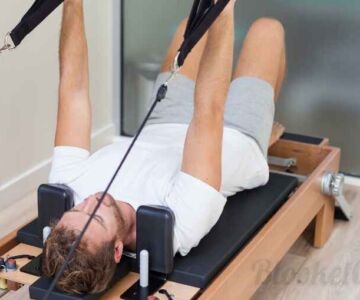In the ever-evolving healthcare landscape, access to timely medical care is a significant concern for patients and providers alike. One of the critical roadblocks is the traditional process of prior authorization, a procedure by which healthcare providers must seek approval from insurance companies before certain treatments or medications can be administered.
This process, while designed to ensure medical necessity and control costs, often delays essential care, adds administrative burdens, and leads to patient frustration.
To address these challenges, healthcare providers are increasingly turning to virtual prior authorization, a solution that streamlines and modernizes this cumbersome process. Virtual prior authorization systems offer a faster, more efficient way to obtain necessary approvals, improving patient access to care and reducing the strain on healthcare practices.
The Problem with Traditional Prior Authorization
Prior authorization has long been a contentious topic within the healthcare industry. Initially designed as a cost-containment measure by insurance companies, it is now a requirement for many high-cost treatments, procedures, and medications.
Insurance providers use prior authorization to ensure that treatments are medically necessary, and in theory, this process helps control healthcare spending and prevents unnecessary procedures.
However, the reality is far from ideal. Traditional prior authorization methods are plagued by inefficiencies, including manual paperwork, repeated phone calls, and fax communications between providers and insurers. These delays often result in frustration for patients, as their treatment is postponed while awaiting approval.
According to the American Medical Association (AMA), 94% of physicians report that prior authorizations lead to delays in patient care. Furthermore, 30% of physicians say these delays have resulted in serious adverse events, as patients are forced to wait for necessary treatments.
In addition, the process places a significant administrative burden on healthcare practices, which must dedicate valuable staff time and resources to navigating the complexities of insurance requirements.
Virtual Prior Authorization: A Solution for Better Patient Access
Virtual prior authorization aims to alleviate these issues by digitizing and automating the process, allowing for faster approvals and greater transparency. Instead of relying on manual interactions with insurance companies, healthcare providers can now submit authorization requests electronically through integrated platforms.
These systems automate much of the workflow, reducing the need for paperwork and phone calls and enabling real-time communication between healthcare providers and insurers.
1. Faster Approval Times
One of the most significant advantages of virtual prior authorization is the speed at which approvals can be obtained. Traditional prior authorizations can take days or even weeks to process, particularly for complex cases or high-cost treatments.
Virtual systems, on the other hand, enable providers to submit requests electronically, with many approvals granted in real time or within hours.
This rapid turnaround is especially beneficial for patients who require urgent or time-sensitive treatments. For example, patients with chronic conditions, such as cancer or diabetes, may need immediate access to medications or procedures to manage their health effectively.
Virtual prior authorization ensures that these patients are not left waiting for days while their condition deteriorates.
2. Improved Communication and Transparency
One of the major frustrations with traditional prior authorization is the lack of communication between healthcare providers, patients, and insurance companies. Often, patients are left in the dark about the status of their authorization requests, while providers struggle to track the progress of their submissions.
Virtual prior authorization platforms offer a centralized, transparent system that allows for real-time updates on the status of requests.
Healthcare providers can quickly see whether an authorization has been approved, denied, or is pending additional information, and they can take immediate action to address any issues.
This improved communication reduces the likelihood of delays and ensures that patients are kept informed throughout the process.
Patients benefit from this transparency as well. Instead of anxiously waiting for their provider to inform them of approval, they can receive updates in real time, giving them peace of mind and a clearer understanding of when they will receive their treatment.
3. Reduced Administrative Burden
The administrative burden of prior authorization is a significant pain point for healthcare providers. Practices spend an average of nearly 15 hours per week navigating prior authorization requirements, according to a report by the AMA. This time could otherwise be spent on patient care or other critical tasks within the healthcare facility.
By automating much of the prior authorization process, virtual platforms free up valuable time and resources for healthcare staff. Information can be pulled directly from electronic health records (EHRs) and sent to insurance companies, reducing the need for manual data entry.
Additionally, virtual systems can flag missing or incorrect information before a request is submitted, decreasing the likelihood of a denial due to administrative errors.
The streamlined process not only saves time but also reduces the overall cost of managing prior authorizations. Fewer staff hours are required, and providers can allocate more resources to direct patient care, improving the overall quality of service.
4. Enhanced Accuracy and Compliance
One of the primary reasons for prior authorization denials is incomplete or incorrect information in the initial submission. This is especially common when dealing with complex treatments or medications that have specific criteria for approval.
In traditional systems, providers often have to submit multiple requests before obtaining approval, leading to further delays in patient care.
Virtual prior authorization platforms enhance accuracy by integrating with EHRs and pulling the necessary patient data directly into the request.
This ensures that all relevant information, including medical history, diagnosis codes, and treatment plans, is included in the submission. By automating these steps, virtual systems reduce the risk of errors and increase the likelihood of approval on the first attempt.
Additionally, virtual systems help healthcare providers stay compliant with ever-changing insurance regulations. Insurance companies frequently update their criteria for approving certain treatments and keeping track of these changes can be challenging for busy healthcare practices.
Virtual platforms automatically update their systems with the latest insurance requirements, ensuring that providers are always submitting requests that meet the necessary criteria.
5. Better Patient Outcomes
At its core, virtual prior authorization is about improving patient outcomes. By reducing delays in care and ensuring that patients receive the treatments they need on time, virtual systems play a critical role in enhancing the overall healthcare experience.
For patients with chronic conditions, timely access to medications and procedures can make the difference between effective disease management and worsening health outcomes. Virtual prior authorization minimizes the risk of delays and helps ensure that patients stay on track with their treatment plans. This, in turn, leads to better health outcomes and improved patient satisfaction.
Moreover, the reduced administrative burden on healthcare providers allows them to focus more on patient care. When staff members are not bogged down by paperwork and phone calls, they have more time to spend with patients, answering questions, addressing concerns, and providing the support needed for effective treatment.
The Role of Virtual Prior Authorization in the Future of Healthcare
As healthcare continues to evolve, virtual prior authorization will play an increasingly important role in improving patient access to care. The integration of digital tools into the prior authorization process is just one example of how healthcare is becoming more efficient, patient-centered, and focused on delivering timely care.
In the future, we can expect virtual prior authorization platforms to become even more sophisticated, with further improvements in automation, real-time communication, and data integration.
These advancements will continue to reduce the administrative burden on healthcare providers, allowing them to focus on what matters most: providing high-quality care to their patients.
The move towards virtual prior authorization also aligns with broader trends in healthcare that emphasize value-based care and patient satisfaction. By ensuring that patients receive the right treatments at the right time, virtual systems contribute to better health outcomes and a more efficient healthcare system overall.
Conclusion
Virtual prior authorization represents a significant advancement in the way healthcare providers manage patient care. By streamlining the prior authorization process, reducing delays, and enhancing communication, virtual platforms are helping to improve patient access to essential treatments and procedures.
As more healthcare providers adopt virtual solutions like DocVA, we can expect to see a continued shift towards more efficient, patient-centered care. By reducing the administrative burden on providers and ensuring that patients receive timely care, virtual prior authorization is paving the way for a more effective healthcare system.



